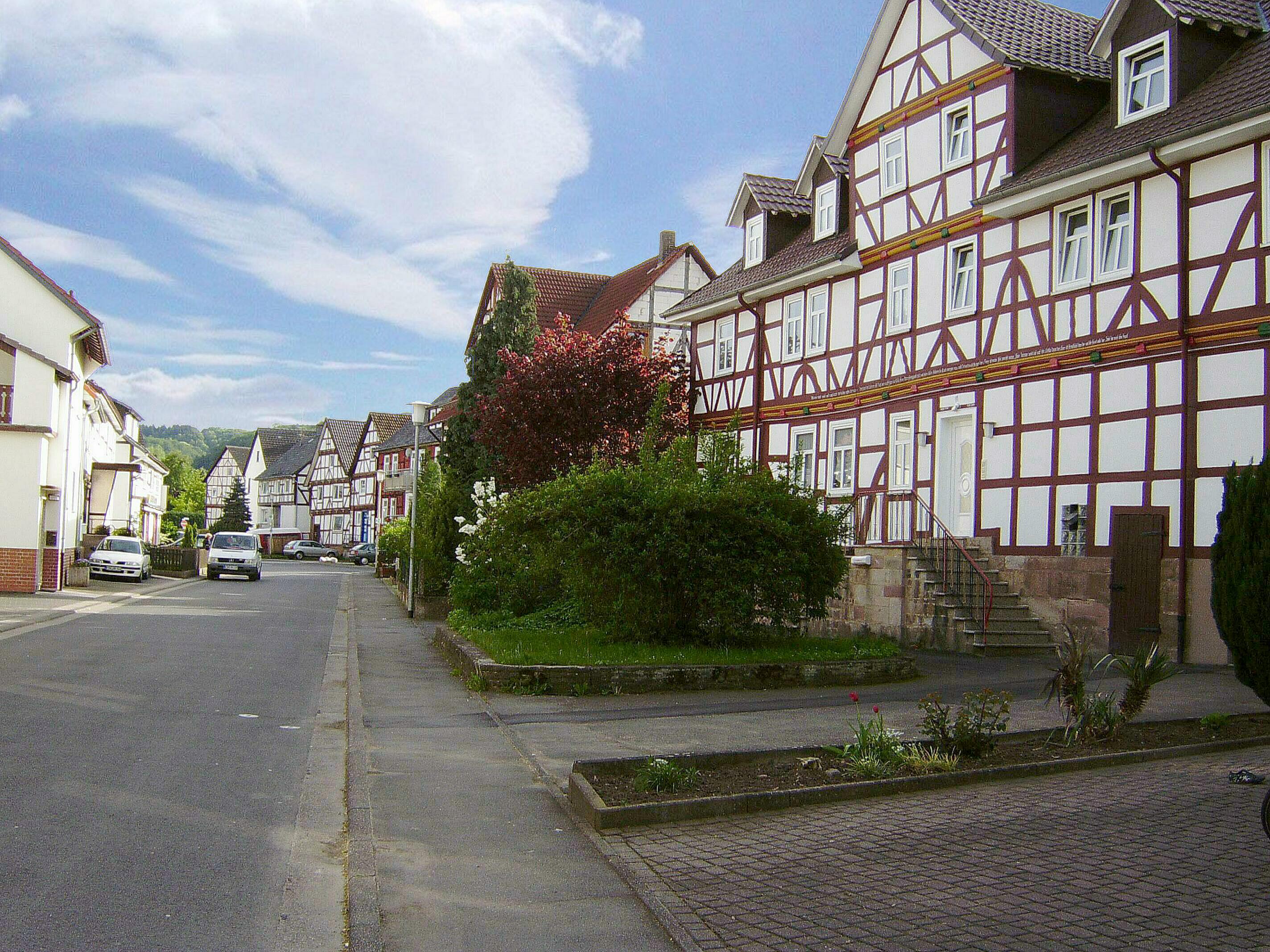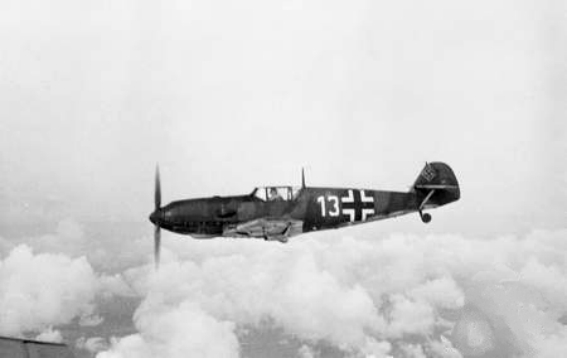|
Heinrich Füllgrabe
Heinrich Füllgrabe (26 July 1916 – 30 January 1945) was a Luftwaffe ace and recipient of the Knight's Cross of the Iron Cross during World War II. The Knight's Cross of the Iron Cross was awarded to recognise extreme battlefield bravery or successful military leadership. After joining the Luftwaffe in the late 1930s, after his training as a fighter pilot, Füllgrabe was appointed to serve as the Unteroffizier 9./JG 52 in spring 1941. Füllgrabe became a member of one of the most efficient units of the Luftwaffe, Karaya Quartet, where he flew alongside Hermann Graf (212 kills), Alfred Grislawski (133) and Ernst Süß (68). Füllgrabe was killed on 30 January 1945 by Soviet anti-aircraft fire near Brieg in Silesia. During his career he was credited with 67 aerial victories, all of them on the Eastern Front, including five Il-2 Sturmoviks. Early life and career Füllgrabe was born on 26 July 1916 in Witzenhausen in Hesse-Nassau, a province of the Kingdom of Prussia within th ... [...More Info...] [...Related Items...] OR: [Wikipedia] [Google] [Baidu] |
Witzenhausen
Witzenhausen is a small town in the Werra-Meißner-Kreis in northeastern Hesse, Germany. It was granted town rights in 1225, and until 1974, it was a district seat. The University of Kassel maintains a satellite campus in Witzenhausen at which is offered the ecological agricultural sciences programme, which is unique in the country. This also puts Witzenhausen among Germany's smallest university towns. Furthermore, a teaching institute ( DEULA) for environment and technology, agriculture, horticulture and landscaping. The town is also nationally known for the invention of the ''Biotonne'' – a biological refuse container – in 1983, and as an important cherry-growing area; it is said to be Europe's biggest self-contained cherry-growing area. Cherries are traditional in Witzenhausen, which has led to the yearly ''Kesperkirmes'', or “Cherry Fair” (''Kesper'' is a regional name for the cherry; the standard German word is ''Kirsche''), at which a Cherry Queen (''Kirschenkönigin ... [...More Info...] [...Related Items...] OR: [Wikipedia] [Google] [Baidu] |
Il-2 Sturmoviks
The Ilyushin Il-2 (Russian: Илью́шин Ил-2) is a ground-attack plane that was produced by the Soviet Union in large numbers during the Second World War. The word ''shturmovík'' ( Cyrillic: штурмовик), the generic Russian term for a ground-attack aircraft, became a synecdoche for the Il-2 in English sources, where it is commonly rendered Shturmovik, StormovikStapfer, 1995 and Sturmovik.Rastrenin, 2008 To Il-2 pilots, the aircraft was known by the diminutive "Ilyusha". To the soldiers on the ground, it was called the "Hunchback", the "Flying Tank" or the "Flying Infantryman". Its postwar NATO reporting name was Bark.Gunston 1995, p. 106. During the war, 36,183 units of the Il-2 were produced, and in combination with its successor, the Ilyushin Il-10, a total of 42,330Jane's 1989, p. 529. were built, making it the single most produced military aircraft design in aviation history, as well as one of the most produced piloted aircraft in history along with t ... [...More Info...] [...Related Items...] OR: [Wikipedia] [Google] [Baidu] |
Gotthard Handrick
Gotthard Handrick (25 October 1908 – 30 May 1978) was a German Olympic athlete and German fighter pilot during the Spanish Civil War and World War II. Career Handrick was born on 25 October 1908 in Zittau, at the time in the Kingdom of Saxony as part of the German Empire. He won the gold medal in the modern pentathlon at the 1936 Summer Olympics in Berlin. In July 1937, Handrick was appointed '' Gruppenkommandeur'' (group commander) of ''Jagdgruppe'' 88 (18 July 1937 – 10 September 1938). This unit fought in the Spanish Civil War where he claimed five aerial victories while flying for the Legion Condor, including a Polikarpov I-15 fighter on 9 September 1937 and an Polikarpov I-16 fighter on 18 May 1938. He was later awarded the Spanish Cross in Gold with Swords () on 14 April 1939 for his service in the Spanish Civil War. Handrick was then given command of I. ''Gruppe'' of ''Jagdgeschwader'' 132 "Schlageter" on 11 September 1938 after his return from Spain. This unit ... [...More Info...] [...Related Items...] OR: [Wikipedia] [Google] [Baidu] |
Invasion Of Poland
The invasion of Poland (1 September – 6 October 1939) was a joint attack on the Republic of Poland by Nazi Germany and the Soviet Union which marked the beginning of World War II. The German invasion began on 1 September 1939, one week after the signing of the Molotov–Ribbentrop Pact between Germany and the Soviet Union, and one day after the Supreme Soviet of the Soviet Union had approved the pact. The Soviets invaded Poland on 17 September. The campaign ended on 6 October with Germany and the Soviet Union dividing and annexing the whole of Poland under the terms of the German–Soviet Frontier Treaty. The invasion is also known in Poland as the September campaign ( pl, kampania wrześniowa) or 1939 defensive war ( pl, wojna obronna 1939 roku, links=no) and known in Germany as the Poland campaign (german: Überfall auf Polen, Polenfeldzug). German forces invaded Poland from the north, south, and west the morning after the Gleiwitz incident. Slovak military forces ad ... [...More Info...] [...Related Items...] OR: [Wikipedia] [Google] [Baidu] |
Merseburg
Merseburg () is a town in central Germany in southern Saxony-Anhalt, situated on the river Saale, and approximately 14 km south of Halle (Saale) and 30 km west of Leipzig. It is the capital of the Saalekreis district. It had a diocese founded by Archbishop Adalbert of Magdeburg. The University of Merseburg is located within the town. Merseburg has around 33,000 inhabitants. Names * cs, Merseburk, Meziboř * french: Mersebourg * german: Merseburg * la, Merseburga * pl, Międzybórz * wen, Mjezybor Geography The town Merseburg consists of Merseburg proper and the following four ''Ortschaften'' or municipal divisions:Hauptsatzung der Stadt Merseburg § 15, April 2019. * [...More Info...] [...Related Items...] OR: [Wikipedia] [Google] [Baidu] |
Słupsk-Redzikowo Airport
Słupsk-Redzikowo Airport is a disused civil airport in Słupsk (100,000 inhabitants), northern Poland. Its airport in Słupsk-Redzikowo, that has a 7,200-foot-long runway, and a record of serving domestic flights to the popular seaside destination close to the Baltic sea. In the 1980s there were scheduled flights to Warsaw and Koszalin, and before World War II to Berlin and Königsberg. It covers approximately 2.5 million people in its catchment area, and many popular seaside resorts. Słupsk participates in the "DEAR" project, that supports the local authorities trying to revive its airports. History The airfield Stolp-West was opened in 1916 for the Imperial German ''Luftstreitkräfte'', after the Versailles Treaty the airfield was used as a civilian airport. It became a vital connection to East Prussia, which was cut off from mainland Germany by the Polish Corridor. In 1921, the "Luftverkehrsgesellschaft Pommern" was founded which operated from Stolp-West. The Deutsche Luft ... [...More Info...] [...Related Items...] OR: [Wikipedia] [Google] [Baidu] |
Jagdfliegerschule
The German Luftwaffe of the Wehrmacht had seven ''Jagdfliegerschulen'' or Fighter Pilot Schools. Jagdfliegerschule Werneuchen or Jagdfliegerschule 1 Jagdfliegerschule Werneuchen was formed on 1 November 1937 in Werneuchen consisting of 3 ''Staffeln'' (squadrons). The school was renamed to ''Jagdfliegerschule'' 1 on 15 January 1940. On 17 December 1941 an operation squadron (''Einsatz-Staffel'') was formed in Jever. This operational squadron then became part of an ad hoc formation called ''Jagdgruppe Losigkeit'', led by ''Hauptmann'' Fritz Losigkeit, to protect a group of warships moving to Norway. ''Jagdgruppe Losigkeit'' was renamed to 10./ Jagdgeschwader 1 in late March 1942. The entire school was renamed on 15 December 1942 and became ''Jagdgeschwader'' 101. Commanding officers *Oberst Theodor Osterkamp, 1 November 1937 – 20 November 1939 *Oberstleutnant Otto-Friedrich Freiherr von Houwald, 20 November 1939 – 15 December 1942 ''Jagdfliegerschule'' Schleißheim or ''Ja ... [...More Info...] [...Related Items...] OR: [Wikipedia] [Google] [Baidu] |
Jagdgeschwader 26
''Jagdgeschwader'' 26 (JG 26) ''Schlageter'' was a German fighter- wing of World War II. It was named after Albert Leo Schlageter, a World War I veteran, Freikorps member, and posthumous Nazi martyr, arrested and executed by the French for sabotage in 1923. The wing fought predominantly against the Western Allies. Formed in May 1939, JG 26 spent the Phoney War period guarding Germany's western borders following the German invasion of Poland and the outbreak of World War II. In May and June 1940 it served in the Battle of Belgium and Battle of France. From July 1940 it operated over England in the Battle of Britain under the command of Adolf Galland, future '' General der Jagdflieger''. JG 26 remained in France and Belgium fighting against the RAF Fighter Command Circus offensive in 1941 and 1942, with considerable tactical success. In 1943 it faced the USAAF Eighth Air Force, and along with the rest of the Luftwaffe fighter force, was worn down over Western ... [...More Info...] [...Related Items...] OR: [Wikipedia] [Google] [Baidu] |
Jagdgeschwader 234
''Jagdgeschwader'' 234 was a fighter wing of Nazi Germany's Luftwaffe in World War II. It operated during peacetime and conducted formation flying, simulated aerial combat, and firing on ground targets. Many of its pilots came from Jagdgruppe 88 (Legion Condor) operating in Spain during the Spanish Civil War. Organisation Main article: Organisation of the Luftwaffe (1933–45) A Luftwaffe ''Geschwader'' (wing formation) was the largest homogenous flying formation. It typically was made up of three groups (''Gruppen''). Each group contained approximately 30 to 40 aircraft in three squadrons (''Staffeln''). A ''Jagdgeschwader'' could field 90 to 120 fighter aircraft. In some cases a wing could be given a fourth ''gruppe''. Each wing had a '' Geschwaderkommodore'' (wing commander) supporting by three '' Gruppenkommandeur'' (Group Commanders). Each squadron was commanded by a ''Staffelkapitän'' (squadron leader). The ''staffel'' contained approximately 12 to 15 aircraft. The identi ... [...More Info...] [...Related Items...] OR: [Wikipedia] [Google] [Baidu] |
Organization Of The Luftwaffe (1933–1945)
Between 1933 and 1945, the organization of the Luftwaffe underwent several changes. Originally, the German military high command, for their air warfare forces, decided to use an organizational structure similar to the army and navy, treating the aviation branch as a strategic weapon of war. Later on, during the period of rapid rearmament, the Luftwaffe was organized more in a geographical fashion. Under the terms of the Treaty of Versailles (1919), Germany was prohibited from having an air force, with the former German Empire's '' Luftstreitkräfte'' disbandment in 1920. German pilots were secretly trained for military aviation, first in the Soviet Union during the late 1920s, and then in Germany in the early 1930s. In Germany, the training was done under the guise of the German Air Sports Association (german: Deutscher Luftsportverband (DLV)) at the Central Commercial Pilots School (german: Zentrale der Verkehrs Fliegerschule (ZVF)). Following its 15 May 1933 formation in secre ... [...More Info...] [...Related Items...] OR: [Wikipedia] [Google] [Baidu] |
German Empire
The German Empire (),Herbert Tuttle wrote in September 1881 that the term "Reich" does not literally connote an empire as has been commonly assumed by English-speaking people. The term literally denotes an empire – particularly a hereditary empire led by an emperor, although has been used in German to denote the Roman Empire because it had a weak hereditary tradition. In the case of the German Empire, the official name was , which is properly translated as "German Empire" because the official position of head of state in the constitution of the German Empire was officially a "presidency" of a confederation of German states led by the King of Prussia who would assume "the title of German Emperor" as referring to the German people, but was not emperor of Germany as in an emperor of a state. –The German Empire" ''Harper's New Monthly Magazine''. vol. 63, issue 376, pp. 591–603; here p. 593. also referred to as Imperial Germany, the Second Reich, as well as simply Germany, ... [...More Info...] [...Related Items...] OR: [Wikipedia] [Google] [Baidu] |

.jpg)






